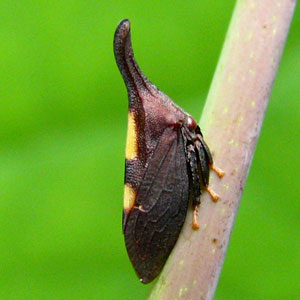Leaf Feeders
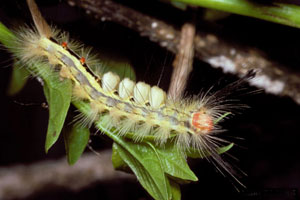
Gerald J. Lenhard, Louisiana State University, Bugwood.org
The White-marked tussock moth caterpillar has a distinctive appearance with four distinct white tufts of hair projecting from behind a red head. The other hair on the body is white with yellow markings beneath, two black "arms" in front, and a long brown "tail" in back. Early instars cause skeletonizing damage while large caterpillars can eat everything except major leaf veins. There are two broods per year (June-August and August-November).
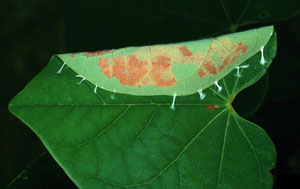
Lacy L. Hyche, Auburn University, Bugwood.org
The Redbud leaffolder caterpillar folds redbud leaves and glues them so the edges are joined. Inside the folded leaf, the black and white striped caterpillar skeletonizes the leaf. Occasionally, caterpillars will knit neighboring leaves together in a tiered fashion. The feeding damage causes brown and orange spotting on the leaves. There can be multiple overlapping generations per season.
Sap Feeders
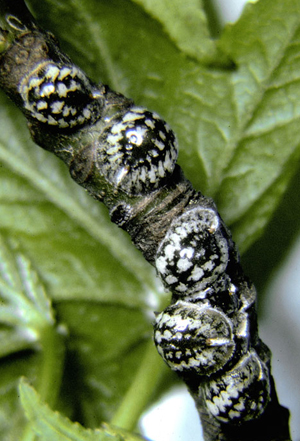
Raymond Gill, California Department of Food and Agriculture, Bugwood.org
Calico scale is a white and dark brown soft scale about 1/4 inch in diameter. It produces a large amount of honeydew in the spring so twigs, branches, and leaves may be covered with sooty mold. This scale can severely weaken trees, making them more vulnerable to drought and other stresses. Egg hatch occurs in May and the crawlers move to leaves to feed for the summer. Nymphs move back to bark for the winter.
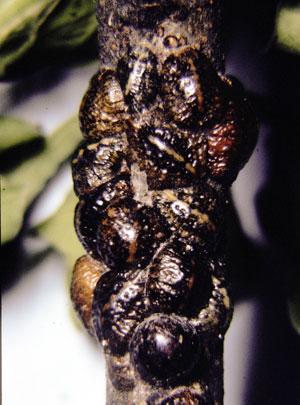
Raymond Gill, California Department of Food and Agriculture, Bugwood.org
European fruit lecanium has a shiny, smooth, convex covering that is about 1/8 inch long. It is brown to reddish brown. The scale passed the winter on twigs or small branches, maturing in late May to early June. Females can lay 900 to over 3,000 eggs that hatch in July. The crawlers move to leaves in July and remain there until August when they move back to the bark for the winter.
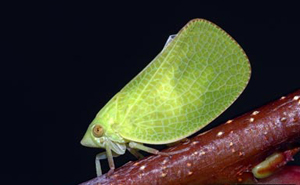
Susan Ellis, Bugwood.org
Leafhoppers are small, active insects that live on the undersides of leaves. They use sucking mouthparts to feed on plant sap. In general they resemble cicadas, sometimes with large wings that are tent-like over the body. Usually they do not cause issues, but large numbers may cause early leaf drop.
Treehoppers are small, active insects that live on the underside of the leaves. They use sucking mouthparts to feed on plant sap. They are very similar to leafhoppers, but have exaggerated pronotums that may resemble humps, thorns, or spikes. Usually large numbers are present by the time the injury is obvious. Heavily damaged leaves may drop early but this insect usually does not cause serious problems.
